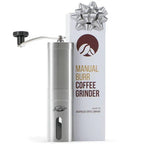Coffee is one of the most beloved beverages around the world, but have you ever wondered who buys the most coffee?
In this article, we will explore the history of coffee, its popularity across different countries, and dive into the demographics of coffee consumers.
We will uncover all the intricacies of coffee purchasing behavior, including gender breakdowns, age ranges, income brackets, and reasons for consumption.
We will also discuss the health benefits and potential risks associated with coffee consumption. Stay tuned to discover the impact of gender on coffee purchases!
What is the History of Coffee?
The history of coffee dates back centuries, with its origins in Ethiopia, where it was discovered by a goat herder named Kaldi. From there, coffee spread across the Arabian Peninsula, becoming a popular beverage for its stimulating effects and social significance.
Read: Coffee Origins 101: Asia And Arabia
Over time, coffee became ingrained in the cultural fabric of Arabian society, with coffee houses serving as hubs for intellectual discourse and social gatherings. The demand for coffee surged, leading to the establishment of trade routes and the birth of the coffee industry. As coffee gained popularity, its consumption patterns evolved, giving rise to various brewing methods and rituals. With the emergence of coffee as a commodity, market trends shifted, and economic factors played a significant role in shaping the global coffee trade.
How Popular is Coffee Around the World?
Coffee is one of the most popular beverages globally, enjoyed by millions of people across different continents. Its popularity is evident in the significant market share it holds in the beverage industry, reflecting changing consumer preferences and industry trends.
The global appeal of coffee spans from bustling city cafes to cozy rural settings, offering a comforting and energizing experience to its diverse consumer base. Market dynamics such as the rise of specialty coffee shops and the demand for convenient on-the-go options have fueled the industry's growth. With an array of brewing methods, flavors, and origins available, coffee enthusiasts can savor unique experiences tailored to their tastes, contributing to the ever-evolving market landscape.
Who Buys the Most Coffee?

Understanding the demographics of consumers who buy the most coffee is crucial for businesses in the retail market. Analyzing coffee purchasing behaviors, market demand, retail sales data, and purchasing power can provide valuable insights into consumer trends and retail trends.
What is the Gender Breakdown of Coffee Consumers?
An analysis of the gender breakdown of coffee consumers reveals interesting insights into consumer behavior and preferences. Understanding the demographics and gender differences in coffee consumption can provide valuable data for market research purposes.
Men and women exhibit distinct preferences when it comes to coffee consumption. Studies indicate that men tend to prefer black coffee or espresso-based drinks, while women often lean towards specialty beverages like flavored lattes or mochas.
Age plays a significant role in coffee choices, with younger consumers showing a preference for cold brews and nitro coffees, whereas older generations may opt for classic drip coffee. These nuanced distinctions highlight the importance of considering gender and age demographics in tailoring marketing strategies for coffee products.
Read: Hot Brewed VS Cold Brewed Coffee: 4 Things To Know
What is the Age Range of Coffee Consumers?
The age range of coffee consumers spans across various demographic segments, reflecting diverse consumption habits and consumer trends. Analyzing customer demographics based on age can offer valuable insights into shifting consumption patterns and preferences.
For instance, studies have shown that younger coffee drinkers, typically aged 18-34, are more inclined towards specialty coffee beverages like flavored lattes and cold brews. This group often values convenience and customization, leading to the rise of on-the-go coffee options and the popularity of mobile ordering apps among this demographic. In contrast, older consumers, aged 55 and above, tend to prefer classic coffee preparations, such as drip coffee or espresso, and may prioritize quality over novelty in their coffee choices.
What is the Income Bracket of Coffee Consumers?
The income bracket of coffee consumers plays a significant role in determining consumer spending patterns and market statistics. Economic factors such as income levels influence consumer behavior and purchasing power, making it essential to consider income demographics in market research.
Consumers with higher income levels are more likely to indulge in premium coffee blends and specialty beverages, contributing to a niche market segment with a focus on quality and experience. On the other hand, those in lower income brackets may opt for more affordable coffee options which cater to their budget constraints. Market research reports often highlight the correlation between income categories and the types of coffee products preferred by different consumer groups, offering valuable insights for companies looking to target specific demographics.
Why Do People Buy Coffee?

Understanding the reasons why people buy coffee is essential for businesses looking to cater to consumer preferences effectively. Analyzing coffee consumption patterns, consumer preferences, shopping behavior, and market segmentation can provide valuable insights into the motivations behind coffee purchases.
What are the Reasons for Coffee Consumption?
There are various reasons why individuals consume coffee, ranging from its stimulating effects to social interactions and cultural traditions. Consumer insights and market trends provide valuable information on purchasing behavior and retail data related to coffee consumption.
This data helps in understanding the motivations behind why people choose certain types of coffee, whether it be for the quick energy boost of espresso or the comforting warmth of a latte. It also sheds light on the growing popularity of specialty coffee options and the shift towards sustainable and ethically sourced beans in response to consumer preferences.
By analyzing consumer behavior at different points of sale, such as cafes, supermarkets, and online retailers, businesses can tailor their offerings to cater to the evolving tastes and demands of coffee enthusiasts.
What Are the Different Types of Coffee Purchases?
Coffee purchases come in various types, from espresso drinks to whole bean purchases for home brewing. Analyzing market insights and conducting market analysis can offer valuable information on consumer preferences and market dynamics related to different types of coffee purchases.
Espresso drinks are favored by consumers who enjoy the convenience and rich flavor of specialty coffee concoctions prepared by skilled baristas at local cafes or chain establishments.
On the other hand, whole bean purchases cater to coffee enthusiasts who prefer to grind their beans fresh at home, savoring the aroma and unique taste profiles of different coffee origins.
Read: How Much Should You Pay For Coffee Beans?
Understanding these trends and preferences through market research can assist coffee retailers and businesses in tailoring their offerings to meet diverse consumer demands in the ever-evolving coffee market.
What Are the Health Benefits of Coffee?

Coffee offers various health benefits due to its caffeine content and antioxidant properties, contributing to its popularity among consumers. Understanding the effects of caffeine consumption, consumption habits, and health risks associated with coffee consumption is crucial in assessing its impact on public health.
How Does Coffee Affect the Body?
Coffee can have various effects on the body, impacting physiological functions and cognitive performance. Analyzing coffee consumption trends, market statistics, and conducting economic analysis can shed light on the potential risks associated with excessive coffee consumption.
With the global coffee market continuously growing, it is evident that many individuals enjoy a cup of coffee daily. The stimulating properties of caffeine in coffee can boost alertness and concentration, making it a popular choice for many people to kickstart their mornings.
Excessive coffee consumption may lead to issues such as disrupted sleep patterns, increased heart rate, and digestive problems. Understanding the balance between the benefits and risks of coffee consumption is crucial in ensuring a healthy relationship with this widely consumed beverage.
What Are the Potential Risks of Coffee Consumption?
While coffee offers health benefits, excessive consumption can pose certain risks to individuals. Analyzing consumption habits, sales data, market insights, and market research surveys can provide valuable information on the potential risks associated with coffee consumption patterns.
- Market insights indicate that while moderate coffee consumption is generally safe, excessive intake can lead to issues such as insomnia, digestive problems, increased heart rate, and heightened anxiety. Prolonged high caffeine intake may contribute to conditions like osteoporosis and heart complications.
- Sales data reveals a significant uptrend in coffee consumption, with specialty coffee varieties gaining popularity. Market research surveys highlight that younger demographics often indulge in high caffeine content beverages, potentially increasing their vulnerability to adverse effects.

